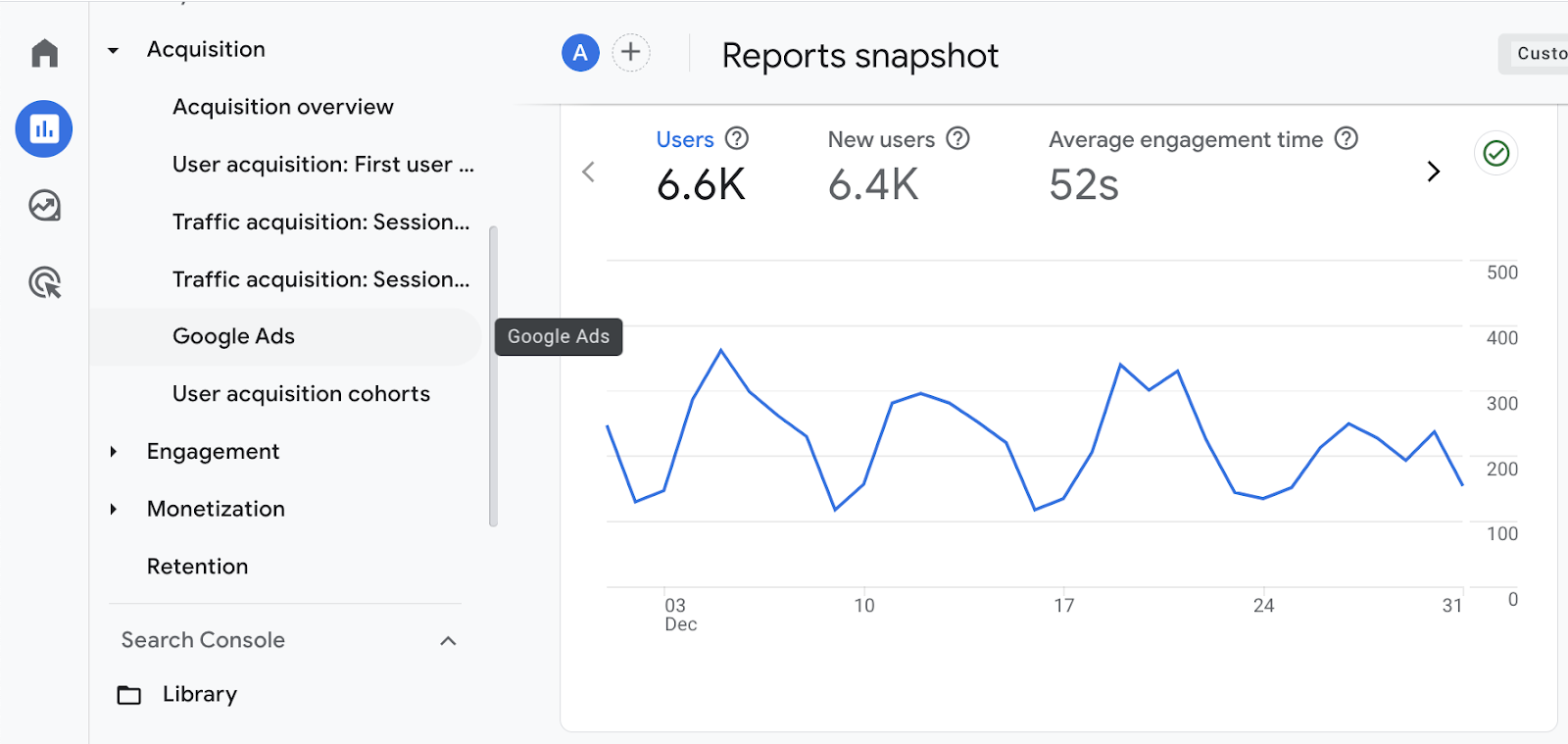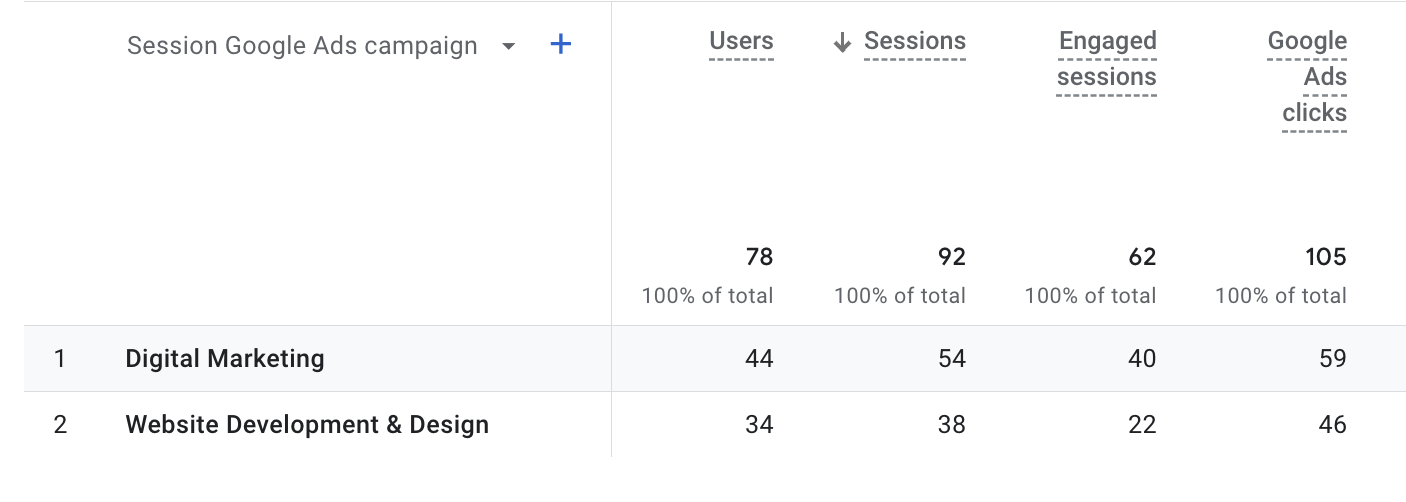Google Ads Performance Max Campaigns: What Are They & When Should You Use Them?
Google Ads introduced a new campaign type in 2022 called Performance Max (PMAX). Since then, it has released new features to support PMAX ad campaigns. However, Performance Max ads are still fairly new, and we want to help digital marketers and business owners learn more about them!
Our digital marketing experts at Blue Compass have spent much time learning about PMAX and have seen success for clients who have started using this campaign type. Just last year, we implemented a PMAX campaign for a general services client of ours to run in tandem with their already existing Search campaign. The results were significant!
In just one month, the Search campaign had three conversions and their new PMAX campaign had 19 conversions at about the same cost. Given the right amount of data, feedback, optimizations and time, PMAX campaigns can be very successful. How can you experience similar success with Google’s Performance Max? Here is what you need to know about Performance Max ads to increase your business's online leads and conversions.
What Is Google Performance Max?
Google Ads Performance Max is a goal-based campaign type geared towards retailers; however, any business offering services or products can benefit from it. PMAX ads can be shown in Search, Display, Discover, Maps, Gmail, and YouTube, giving advertisers more visibility than regular Search campaigns.
The goal of Google Ads Performance Max is consolidation. Unlike Smart Shopping campaigns, which required a separate ad campaign for each brand you wanted to advertise, PMAX allows you to upload all types of assets and access all of Google's ad placements from a single campaign. You can upload various assets, including headlines, descriptions, images, videos, and data feeds to fit each of Google's advertising channels, and Google's machine-learning technology will test which combinations work best for your campaign. Advertisers can set conversion goals and rely on Google's automated bidding to meet them.
Why Should You Use Performance Max?
Google Ads Performance Max is an all-in-one campaign type capable of serving the needs of most advertisers. It is designed to complement keyword-based Search campaigns and can help advertisers unlock new audiences while simplifying campaign management and improving overall paid search performance.
Performance Max campaigns are an effective way to increase online leads and conversions for your business. Advertisers can provide Google Ads PMAX with assets – a bucket of keyword-rich headlines and descriptions, images and videos. PMAX will utilize Google’s AI capabilities to test different combinations of those assets to help determine which drive the most valuable conversions to your business. This makes the optimization process much easier for advertisers since Google is doing the initial “heavy-lifting.” After the first 30 days of your new PMAX campaign being active, you can use Google’s findings to make more intentional tweaks and optimizations to your ads and audience signals.
Tips For Optimizing Google PMAX Campaigns
You can do many things from the jump to set your Performance Max ads up for success. Here are a few tips from our experts to help you get the most out of your PMAX campaigns:
- Use Performance Max to supplement other campaign types, like traditional Search campaigns. Each campaign type has its unique strengths and weaknesses. By running only one, advertisers limit their paid search efforts. Run PMAX with other campaign types for a more balanced and effective paid search strategy.
- Exclude brand keywords, keywords that include your brand’s name, from PMAX to avoid cannibalizing your Search ads. Google Ads Performance Max looks to generate more conversions. Not excluding branded terms can result in Google PMAX bidding on really expensive brand-adjacent search queries.
- Track where your PMAX traffic is coming from to get the most accurate representation of your campaign’s performance. Focusing on the overall performance of PMAX ads alone can easily mislead advertisers. Overall performance metrics use averages, leading to oversimplified data and false assumptions about your performance in Google SERPs. For example, your overall Conversions may be up compared to a previous period, but when you look more closely at the data, you’ll find those Conversions are only coming from one of your PMAX ads. Therefore, the overall data is showing a positive result, but in reality some of your ads are falling short of your goals. Tracking this data more meticulously can help you detect potential inefficiencies and ultimately put you in a better position to adjust your campaigns for success.
Tracking Your Performance Max Campaign Traffic Acquisition
The Google Ads platform offers a great overview of your PMAX campaign performance, however it is limited. At Blue Compass, we utilize Google Analytics 4 (GA4) to gain a deeper understanding of which campaigns and ad groups our and our clients’ PMAX traffic is coming from. GA4 offers helpful reports where advertisers are able to see their Traffic Acquisition. Our experts make it a best practice to create an Acquisition report specifically for Google Ads. The report clearly lists out the name of our campaigns and the ad groups that live within them making it fast and simple to see which are seeing the most clicks, engagement, conversions and more. Gain more insight on GA4 reporting including how to customize existing reports, set up new reports, and evaluate the data within them.


Google Ads Performance Max Audience Signals
With audience signals (demographics, interests, and behaviors), advertisers can tell Google what kind of users they want their Performance Max ads to show for. However, your ads will not show for the exact users you input. For example, if you were to upload a customer list to a Performance Max campaign, it does not mean your ad will show to them. Instead, Google will use audience signals to define a solid starting point for where to show your Performance Max ads. It will then test what types of users related to your audience are willing to convert so you can hone in on them.
Using Keywords In Performance Max Campaigns
While you can't add keywords directly to a Performance Max campaign, advertisers can add search terms to custom segments. Similarly to audience signals, Google will use the search terms provided to show ads to the existing audience you hope to reach and new audiences who behave the same way. Recently, advertisers have also been able to add negative keywords to define their audience better and avoid wasted click costs on low quality leads.
A Robust Bucket Of Creatives Is Critical For PMAX Success
Advertisers can set up their Performance Max Campaigns for success by providing a robust bucket of creatives. Google Ads Performance Max allows up to 20 images, one video, and two logos per Asset Group. You can also include up to 15 headlines, five long headlines, and five descriptions. The more you provide, the greater more opportunities you will have to reach new audiences you might have yet to consider. Additionally, Google will be able to test more combinations of your assets to help determine what drives the most conversions for your business.
Monitor Your Performance Max Ads Closely & Optimize Accordingly
Google Ads Performance Max relies on AI, but that does not mean they are set-it-and-forget-it campaigns! There is no substitute for thorough audience research and ongoing optimizations. As a digital marketer or business owner, you are the expert with the strongest understanding of your buyer’s journey. Providing your primary audience to Google will give it the signals it needs to discover other audiences likely to convert. “Primary audience” is not a setting within Google Ads like Audience Signals, but is something you need to have clearly defined when building a Performance Max campaign. Establishing who your best customers are will help you develop effective targeting and will operate as guardrails for future audience optimizations. Once you’ve launched your Performance Max campaign, it’s important to monitor it closely and optimize accordingly.
Discover The Possibilities With PMAX From Blue Compass’s Experts
Performance Max is a great option if you want to diversify your ad placements and drive more visibility to your business from a single campaign. We're happy to help you get started with Google Ads Performance Max campaigns! Please reach out to our team of search engine marketing experts in Des Moines and let us know how we can assist.